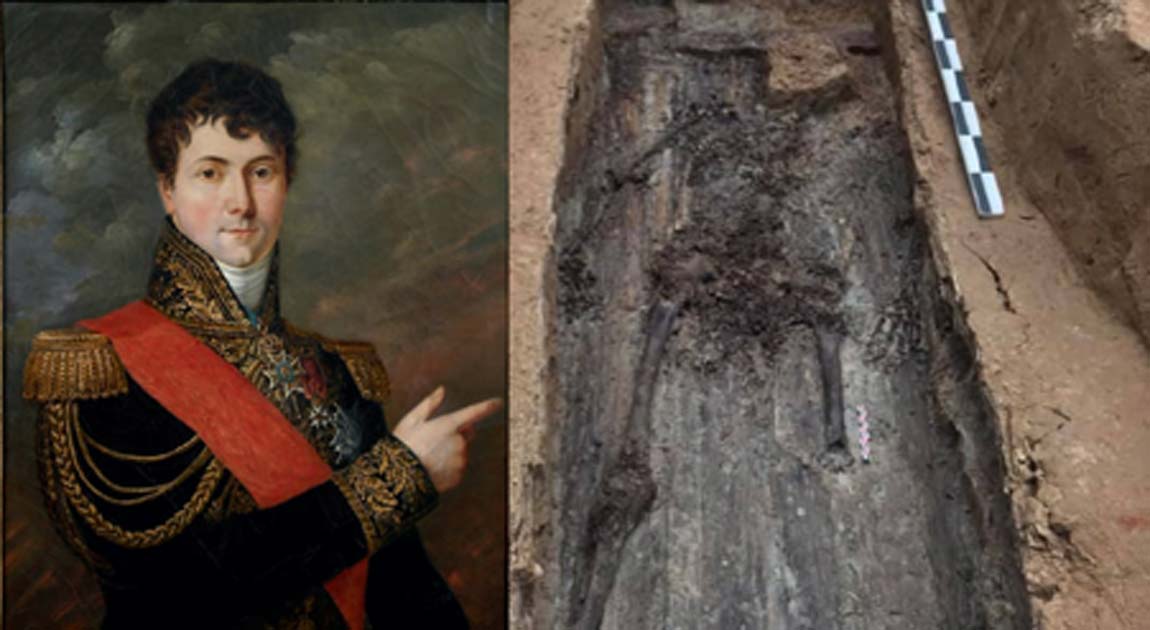Grave of Napoleon’s Favorite General, With Blown Off Leg, Found!
A 200-year-old mystery, dating from Napoleon’s invasion of Russia, may have been solved. Researchers believe that they have finally found the remains in Smolensk of one of Napoleon’s favorite generals. If confirmed, the body of the general is expected to be repatriated to France.
For two centuries the body of General Charles Etienne Gudin has been missing. He graduated from the same military academy as Napoleon, was a very successful commander, and was a national hero.

Portrait of General Charles Etienne Gudin (1839) by Georges Rouget. (Public Domain)
The general met his demise after he was badly wounded by a cannonball and ‘‘he had to have his leg amputated and died three days later from gangrene’’ in 1812, according to the BBC. ‘‘The French army cut out his heart, now buried at the Pere Lachaise cemetery in Paris,’’ reports the Daily Mail.
- The Napoleonic Expedition to Egypt: The Path to Conquest and Glory – Part I
- What is Chauvinism? Tracing the Term from the Legendary Nicolas Chauvin to Misogyny
- Napoleon’s Amazing Foresight: Savants, Soldiers and Science
200-Year-Old Riddle Solved
The rest of his body was buried somewhere near the battlefield where he received his fatal wounds. The location of the French general’s grave was forgotten, but Gudin’s name is inscribed on the Arc de Triomphe in Paris and there is even a street named after him in the French capital.
Now, the mystery of the General’s grave may have been finally solved by a team of Russian and French experts led by Pierre Malinowski, a controversial historian and former soldier. It was unearthed in the city of Smolensk in the west of the Russian Federation not far from the Belarus border.

The skeletal remains are believed to be General Charles Etienne Gudin. (Pierre Malinowski)
At first the team followed the ‘‘memoirs of a subordinate of Gudin, Marshall Davout, who organized the funeral,’’ according to Courthouse News. However the memoirs did not lead to the general’s resting place and instead the researchers used the observations of an eye-witness of Gudin’s funeral to trace the burial.
A Skeleton with One Leg
This led the team to find the skeleton of a man ‘‘buried in a park beneath the foundations of a dance floor’’ in a wooden coffin, reports ABC News. It is estimated that the man was aged between 40 to 45 when he died and it is known that Gudin died at the age of 44.

The skeleton is believed to belong to Charles Etienne Gudin, one of Napoleon’s favorite generals. (Le Soir.be)
Moreover, the skeleton only had the bones for one leg, which would indicate that it is the French general. Malinowski stated that ‘‘wounds on the body, as well as its size and age, left no doubt as to the identity of the remains,’’ reports ABC News.
However, the team has not definitively stated that the remains found in Smolensk are those of Gudin. Courthouse News reports that ‘‘Genetic analysis is being carried out to confirm the identity, using DNA from one of the general’s descendants’’.

Presentation of the skeletal remains in Moscow. (Radio France - Claude Bruillot)
The tests are being carried out in Marseille in France. The results are expected to show that the skeleton is that of the General so highly rated by Bonaparte. One of his descendants, Alberic d'Orleans, stated that "My deepest conviction is that it's him," reports ABC News.
The general sustained the fatal wounds at the battle of Valutino in August 1812. This was an effort by Napoleon to trap the Russian army and force the Tsar to negotiate. However, the Russian army was able to escape and the French suffered 7,000 fatalities. The battle was a missed opportunity for Napoleon to inflict a decisive defeat on the Russians.
- Remains of 3,000 of Napoleon’s soldiers found in mass grave show signs of starvation
- The Napoleonic Discovery of Mass Graves in Austria
- Hundreds of Bodies of Napoleonic Soldiers Unearthed in Germany

Death of the general Gudin at the battle of Valutino (1812). (Public Domain)
Napoleon’s Disaster in Russia
Because of this, he was forced to march on Moscow in order to force Tsar Alexander I to accept Napoleon’s terms for a peace treaty. Instead the Russians adopted a scorched earth policy and employed guerrilla tactics. While Napoleon did capture Moscow, his army was devastated in the Russian winter, hunger, and disease. The failed invasion of Russia is seen as the beginning of the end for the Napoleonic Empire.
If the skeleton is confirmed as that of the war hero, as expected, there are hopes that it will be returned to France. His descendant Mr. d'Orleans would like to see the General’s remains honored with a ceremony when they are returned. He also hopes that he is buried near Napoleon in Paris.
Top image: Portrait of General Charles Etienne Gudin (1839) by Georges Rouget (Public Domain) and the skeletal remains which are believed to belong to the General. (Pierre Malinowski)
By Ed Whelan



















